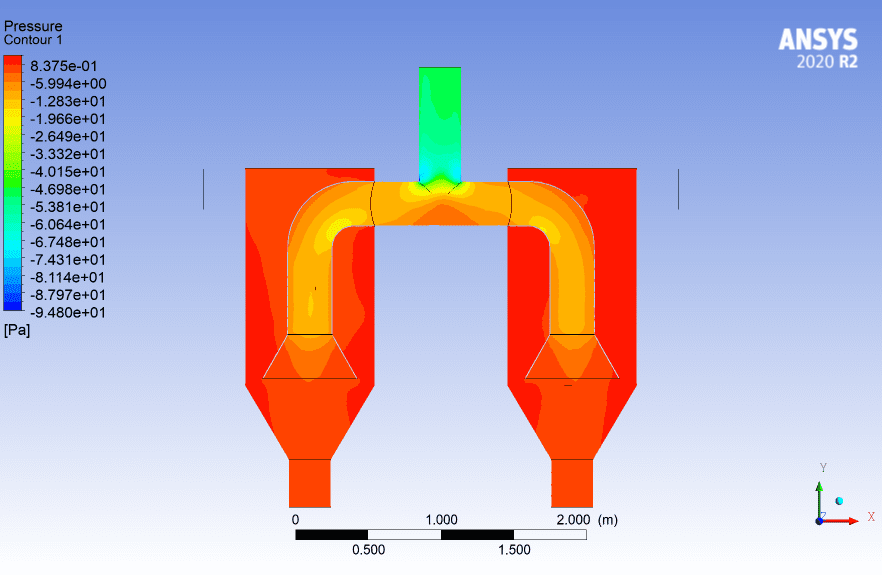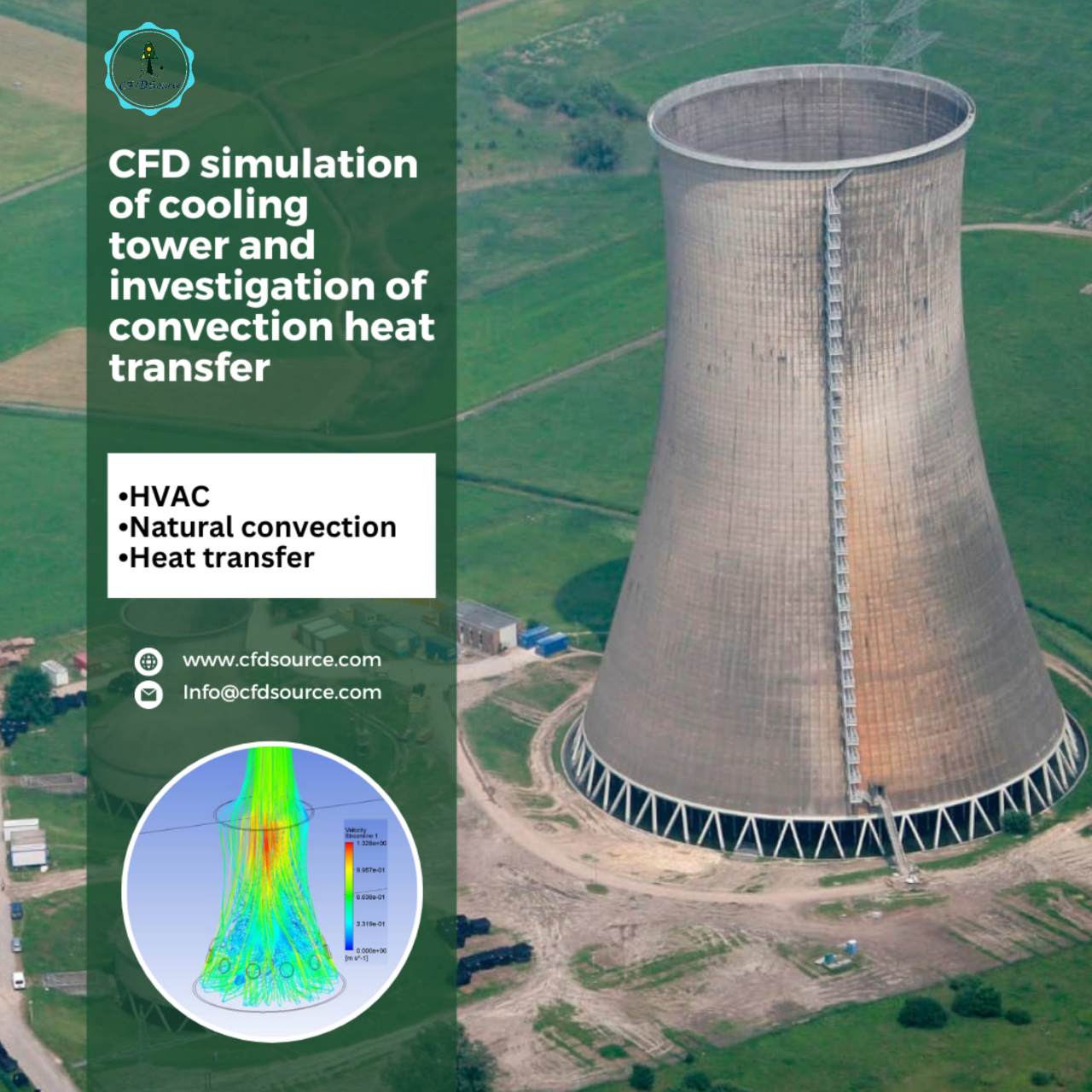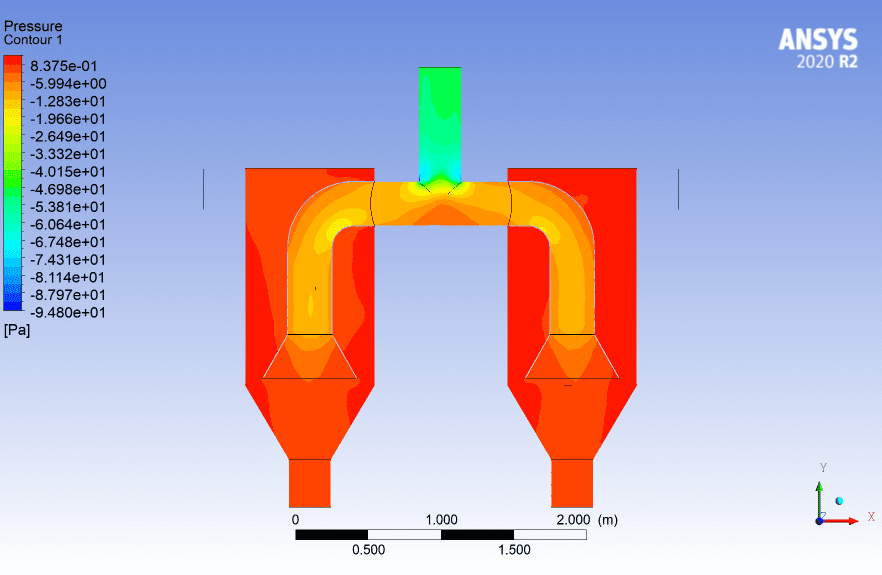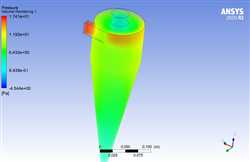
In this article, we first discuss the importance of using CFD simulations in engineering projects and examine how using CFD simulations can save time and costs in engineering projects. You can contact us to receive CFD consulting services. We then introduce some CFD projects in the automotive industry, such as aerodynamic simulations, cooling and heating systems, fuel injection, and combustion, and provide brief explanations. Another industry in which CFD simulation is widely used is the aerospace industry. Aerodynamic and aeroacoustics simulations have a special place in ongoing development projects in this industry.
Another question that may arise is what software to use for CFD projects. We know various software options are available for CFD simulations, with ANSYS Fluent being one of the most well-known and influential options. In the following, we will review Ansys Fluent and some of the projects that we have done using it by our experts. And finally, if you are looking for a good reference for outsourcing your CFD projects, we will guide you on how you can entrust your projects to CFD Source specialists and benefit from the services of our experienced team.
Why is CFD important?
Using Computational Fluid Dynamics (CFD) can lead to more accurate and principled engineering designs without extensive trial and error in analyzing engineering projects. As a result, this science has grown significantly today, and it is used in most engineering projects related to fluid flow and heat transfer. Of course, with the expansion of CFD methods, it is now possible to use them not only for fluid flow but also for more complex regimes such as combustion or particle tracking. For example, CFD can be used to track the spread of the coronavirus in enclosed environments and public spaces.
The use of CFD has expanded with the advancement of computer hardware and the development of CFD codes in various physics. These physics include flows with heat transfer, species transport, multiphase flows, flow in porous media, and more. Multiple models have been developed in CFD software for each of these flow physics. Of course, these software programs have greater capabilities in simulating specific flow physics. For example, Fluent software has greater power in simulating combustion than other CFD software and can achieve better convergence and more accurate results.
CFD projects
We can easily understand the importance of using CFD in engineering projects. Hence, knowing the CFD software according to the goals we know from doing the simulation is essential. As previously mentioned, each software is designed for a specific purpose, so we should use the proper software for each CFD project. However, one of the most comprehensive and versatile software for various projects is ANSYS Fluent. ANSYS Fluent can simulate most physical phenomena and is widely used in industrial projects.
At CFD Source, we have performed various CFD projects in different physics and flow using the Fluent software. You can see these projects in the products section of the website. By purchasing any of these projects, a comprehensive training video of the software simulation steps will be sent to you. After watching this training video, you can complete the project yourself. In addition to the training video, project software files such as geometry and meshing files and Fluent simulation files will be sent to you upon purchasing the project.
CFD projects in the automobile industry
Various CFD projects are carried out in the automotive industry to analyze the car body’s aerodynamics, internal cooling and heating systems, internal oil lubrication systems, simulation of engine combustion, and acoustic analysis. These CFD analyses in recent years have led to the design of cars with lower drag coefficients, lower fuel consumption, less noise and vibration, better air conditioning systems, and less pollution. Therefore, using CFD in the automotive industry is very important, and large automotive companies constantly strive to optimize their designs using CFD simulations. In the following, we will explain a few examples of these projects.
Aerodynamic simulation
One of the most commonly used projects in the automotive industry is the aerodynamic simulation of vehicle bodies using CFD (Computational Fluid Dynamics). Aerodynamic coefficients such as lift and drag can be obtained using these simulations. With this type of analysis, the aerodynamic design of vehicle bodies can be optimized for a lower drag coefficient, resulting in reduced fuel consumption. It is known that the optimal state for minimizing the drag coefficient is similar to the geometry of an airfoil. Therefore, in recent years, vehicle body designs, especially racing cars, have been designed as airfoils to achieve high speeds.
Aerodynamic
Simulation of cooling and heating in the car
Providing comfort for car passengers is always one of the criteria for a suitable car. That’s why car companies are looking to design appropriate air conditioning systems for their vehicles. Computational Fluid Dynamics (CFD) simulations can be used to analyze cars’ cooling and heating systems. Additionally, cooling or heating cycles within the car, such as fluid circulation inside the radiator, can be simulated to improve thermal efficiency. Or for another example, the oil circulation in the lubrication system of the car’s internal parts can be analyzed and checked by CFD simulation.
car hvac
Fuel injection and combustion
Another important project in the automotive industry is simulating the fuel injection and combustion system inside the car engine. We know that internal combustion engines have different types, each with a different fuel injection system and its advantages and disadvantages. Therefore, various methods have been developed for fuel injection and spraying in Ansys Fluent. With these simulations, we can more detail observe the fuel injection process in the combustion chamber. On the other hand, Fluent has different combustion models, such as premixed and non-premixed models. Therefore, we can simultaneously simulate the combustion process while injecting fuel and study and investigate it.
car combustion chamber
CFD projects in the aerospace industry
One of the industries in which CFD simulation is highly important is the aerospace industry. With the emergence of CFD science and its use in the aerospace industry, progress in this industry has increased more than ever. One of the most important CFD projects in this industry is the simulation of the aerodynamics of aircraft bodies and airfoils. We know that various airfoils with numerous designs are used in the aerospace industry, and other designs also come to the minds of engineers. First, these designs must be tested and prove their efficiency in actual aircraft.
In the past, wind tunnels were used to test airfoils, which was time-consuming and expensive. Firstly, the airfoil with the desired geometry had to be made, and then it was entered into the wind tunnel for testing. On the other hand, wind tunnels also have limitations. For example, we cannot test the airfoil at any desired angle or move it with a specific angular speed and test it. With the emergence of CFD science, the aerodynamic testing and analysis of airfoils became much easier and less expensive. We can easily draw any design we have in mind using design software and, after meshing, enter it into ANSYS Fluent and perform the desired simulation.
airfoil in wind tunnel
Using CFD simulations instead of experimental tests in wind tunnels has a lower cost and more flexibility. With the dynamic meshing and overset meshing capabilities in ANSYS Fluent, we can simulate the airfoil in rotational and translational movements with desired speeds and plot lift and drag coefficients. This cannot be done as easily in wind tunnels and, in some cases, may not be feasible.
airfoil
By referring to the products section of our site, you can also view and purchase completed projects related to the aerospace industry.
Another project that is carried out in the aerospace industry is acoustic and aeroacoustics simulations. Acoustic simulations are performed to reduce the extra noises and sounds produced due to the movement of the aircraft. Reducing the excess noise in passenger planes leads to the comfort of passengers, and in military planes, it leads to greater stealth. Additionally, reducing aircraft noise also reduces body vibrations, which leads to the more excellent stability of the aircraft and a reduction in equipment failures caused by vibrations inside the plane. Therefore, such acoustic simulations are of great importance to engineers and designers and are always used to achieve more optimal designs.
Ansys Fluent CFD project
As mentioned, one of the most powerful software for performing CFD projects is ANSYS Fluent. Fluent can simulate various types of flow physics, such as multiphase flows, heat transfer, aerodynamics, phase-changing flows, combustion, and more. Therefore, in most industrial applications, Fluent performs CFD projects. At CFDSOURCE, we have done various projects using Fluent, which you can see in the Products section of our website. These projects are categorized based on various industrial fields and different flow regimes. You can visit your desired subgroup based on your needs and the field in which you need a CFD project and purchase your desired project.
By purchasing any of these projects, you will have access to the simulated files of ANSYS Fluent, along with a comprehensive training video. The training video explains all the simulation steps in detail so that you can independently perform the CFD simulation after watching it. However, our experts at CFDSource are ready to answer any questions you may have about the purchased project. With the purchase of any of these projects, we provide you with free support for three months so that you can complete the CFD simulation learning path and find answers to all your questions.
In the following, we briefly review some of these projects.
CFD simulation of a rocket engine
In this project, a rocket engine has been simulated. The fluid flow in this project is considered compressible. As we know, there is a very high-pressure difference between the two ends of the rocket engine; on one side, there is atmospheric pressure, and on the other, there is a very high pressure of the flow coming out of the combustion chamber. Therefore, the fluid must be considered compressible in this simulation, and the ideal gas equation is used to define the density relationship. In such simulations with high pressure at the inlet, the pressure far-field boundary condition defines the boundary condition. In this boundary condition, the upstream Mach number can also be determined in addition to the high pressure, which helps the simulation to converge faster.
CFD projects - rocket engine
Outsourcing project in CFD source
So far, we have met some CFD projects; if you need experts to entrust your CFD projects to them to do them for you, you can trust our experts at CFDsource. We at CFDsource do different types of CFD projects. Our experts can do all kinds of CFD projects with different CFD software. In the products section of the site, you can see the projects done by our experts.
To outsource your project, go to the Project Order section of the website and send us your project specifications along with the software files (if any) you have. After receiving your files, our experts will review your project and send you a proposed price based on the required completion time. After reaching an agreement and completing your CFD projects, simulation results, software files, and a complete instructional video of the project implementation stages will be sent to you.





Comments (0)